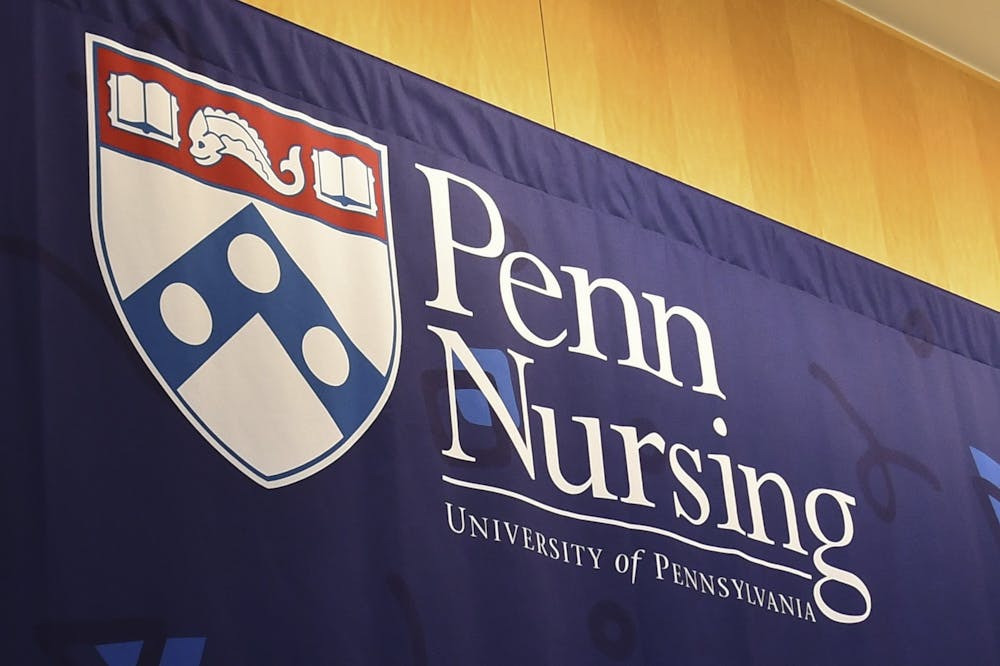Penn's School of Nursing is leading the Philadelphia Community Engagement Alliance Against COVID-19 Disparities to address the substantial health disparities in the city.
The National Institutes of Health has given Philly CEAL more than $1 million in funding through March 2022 to support communities disproportionately affected by the pandemic. The initiative also includes efforts from the Perelman School of Medicine, the Annenberg School for Communication, and the City of Philadelphia.
The initiative includes 10 research teams from across the country that have received $29 million in funding. The NIH gave the Nursing School $1.4 million in funding in April 2021, and additional support from Penn other Penn schools brought the total funding to $1.53 million.
Third-year Nursing Ph.D. student Patrina Sexton Topper, who does research for Philly CEAL, said the initiative’s primary goals are to reduce COVID-19 mortality and morbidity and increase vaccinations. Philly CEAL has focused primarily on geographic disparities by targeting the hardest hit neighborhoods and those with the least access to resources, Stephen Bonnett, a postdoctoral researcher and 2020 Nursing Ph.D. graduate, said. Bonnett's work with CEAL focuses on health equity and with expertise in community engagement research methods.
Philly CEAL has found that West and Southwest Philadelphia have the lowest vaccination rates, Assistant Dean for Community Engagement Terri Lipman said. The initiative is invested in research efforts to understand more about these disparities in Philadelphia, especially communities with the highest mortality rates and lowest vaccination rates, Lipman added.
Nursing Dean Antonia Villarruel wrote in an email to The Daily Pennsylvanian that CEAL has eight priority initiatives, some of which include identifying parents and youth perspectives regarding COVID-19 vaccination, prototyping and piloting testing and vaccine messages through social media, and evaluating neighborhood mobilization strategies.
Philly CEAL’s initiatives are borne from interdisciplinary collaboration and their success is the result of long-standing collaborations between various Penn institutions and community partners, Lipman said.
Sexton Topper works on the participatory research team, which has developed a large survey to understand youth perspectives on the vaccine, health, and well-being in the context of COVID-19. The survey team works with a group of community members who provide real-time feedback on what they hear in their communities, Topper said.
RELATED:
First case of Omicron COVID-19 variant reported in Philadelphia
First Lady Jill Biden visits CHOP to encourage parents to vaccinate their children
The results of the survey and the feedback work as a rapid research tool, which CEAL will use to address misinformation and disseminate updated information, with a focus on the groups that are most affected. Preliminary results from the survey, which aims to reach 4,000 participants, will be available in February 2022.
Youth engagement is a large focus of CEAL since children are less likely to be fully vaccinated than adults in Philadelphia, Lipman said.
To encourage vaccination and provide correct information, the Nursing School works with the Children’s Hospital of Philadelphia, Penn Medicine, and the Netter Center for Community Partnerships in University-assisted schools, Lipman said.
Bonnett said his long-term goal for CEAL is to build a city-wide coalition to amplify collective efforts, instead of various community organizations working in isolation. CEAL aims to accomplish this by fostering and bolstering connections among community organizations, evaluating ongoing strategies used to mitigate COVID-19 disparities, and finding innovative ways to expand work individual organizations are already doing.
Conversely, some of CEAL’s greatest challenges are the constantly changing trajectory of the COVID-19 pandemic, as well as the sheer amount of misinformation, Villarruel wrote.
“It’s been really awesome to see the spirit of interdisciplinarity, and real engagement across the city, with community organizations, with the Public Health department, with the city itself, the city government, and the universities that are involved as well,” Topper said.









